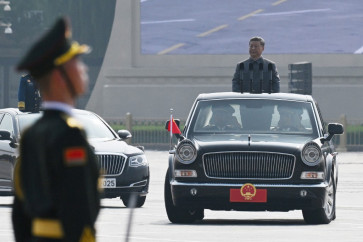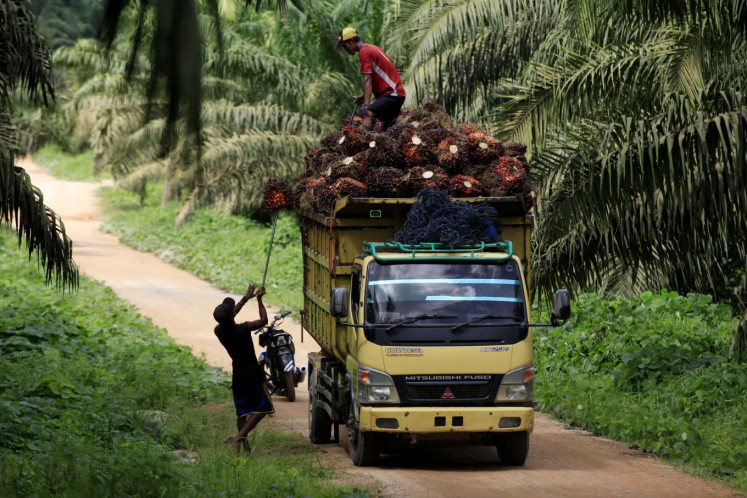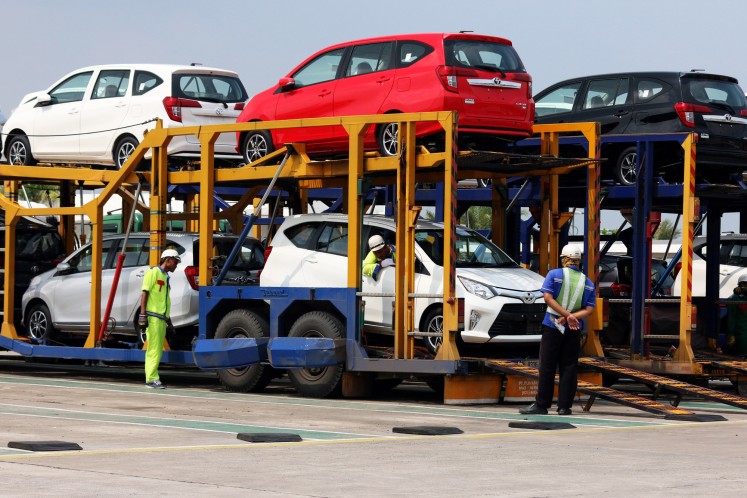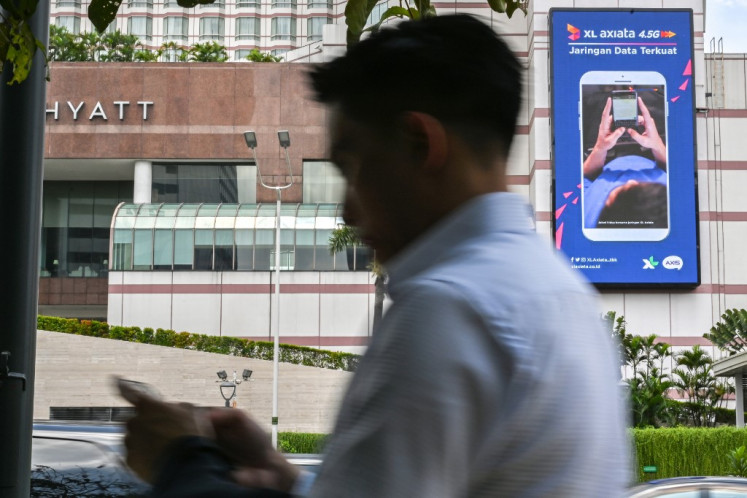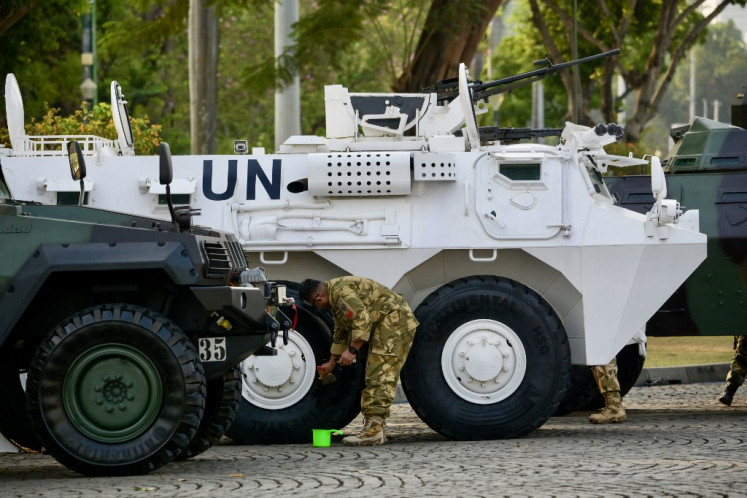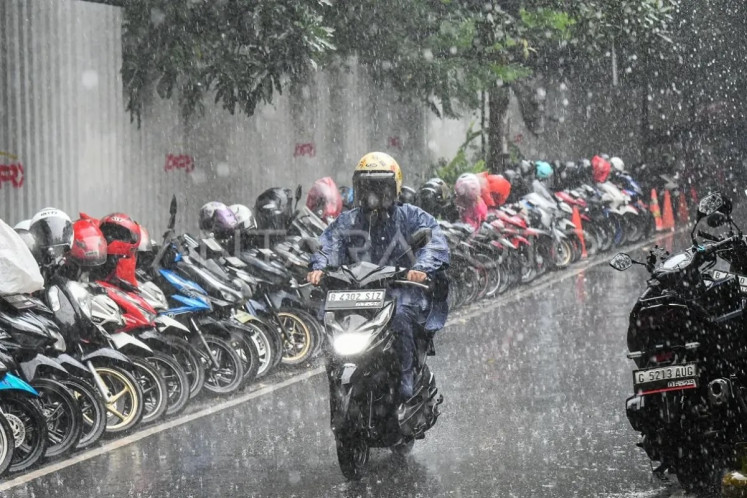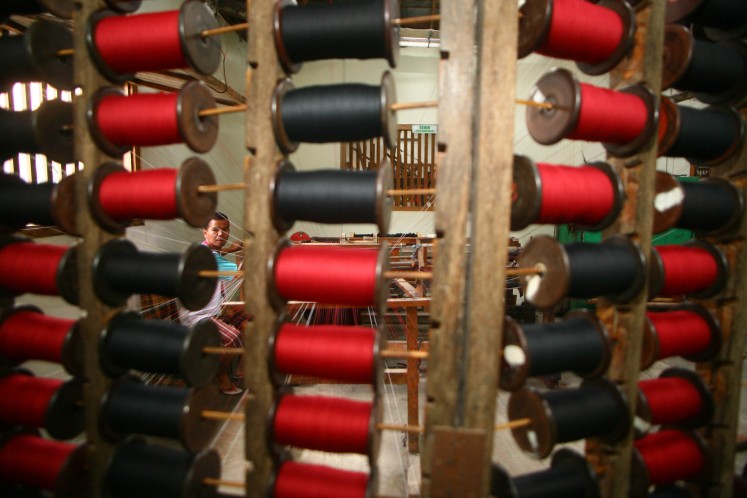Popular Reads
Top Results
Can't find what you're looking for?
View all search resultsPopular Reads
Top Results
Can't find what you're looking for?
View all search resultsSafety standards a concern at amusement parks
With thousands flocking recreation centers and amusement parks during the height of the school holidays, questions abound as to whether park operators are willing to sacrifice safety standards to ensure visitor numbers
Change text size
Gift Premium Articles
to Anyone
W
ith thousands flocking recreation centers and amusement parks during the height of the school holidays, questions abound as to whether park operators are willing to sacrifice safety standards to ensure visitor numbers.
At Mekarsari Tourism Park in Cileungsi, Bogor, visitors were not provided with life vests for the “floating donut” water ride, in which one climbs aboard a giant floating raft in the shape of a donut that spins on the surface of a giant man-made lake.
An attendant at the ride, Ombi, said he had never been instructed to hand out life vests to guests in the two months he had been working there. Further, he added he could not swim, and that the only other attendant, Umil, could not either.
“When a child falls into the water, I use a lifebuoy to help them,” Ombi said, pointing to the one and only lifebuoy available at the ride. “I usually throw out the lifebuoy about 3 meters away from the edge [of the water] using a rope.”
That day, two primary school children and their guardian climbed onto the giant donut, and then tried to keep their balance as it began to spin — pure delight showing on their faces.
Shinta, a public relations staff member present on site, said the ride’s operator had misled the park's management.
“The operator's monthly report states that both [attendants] can swim in accordance with our requirements,” she said, adding that the park’s authorities had not required the two men to demonstrate their ability to swim.
Mekarsari hires third-party operators to manage and supply park equipment and attendants for their Water Zone rides and Sabut Kelapa Outbound activities, she said, adding that the park “closely oversees the operators’ work,” she added.
Many parents too were apparently unaware of the park’s rules and regulations, and others simply ignored them.
One parent, Khoirudin, took off his two-year-old son's life vest — which had been handed to him by an attendant — as the young boy was boarding the Dragon Boat ride. He said his son “felt bothered by the uncomfortable jacket”.
“God willing, I believe nothing bad will happen since the boat looks safe to me,” he said, adding that he would consider it “fate” if an accident did befall his son while on the ride.
The Dragon Boat is a long and narrow motor boat with around 12 seats that takes visitors around a 3-hectare swath of water in the man-made lake, which is about 6 meters deep.
Not all parents showed disregard for the rules. Another parent, Satimin, said he would not allow his two children — aged six and seven — on the boat without life jackets, although both were “adept at swimming”.
He said that on the whole, the park’s safety equipment looked safe.
“None of the life jackets are damaged,” he said. “And the outbound games use proper harnesses instead of the knotted ropes used by operators in my hometown of Medan.”
Mekarsari's Sabut Kelapa outbound recreational facility, whose activities include the Elvis Walk (where one navigates a bridge made from a single piece of bamboo) and a flying fox, appeared to have more impressive safety standards, as befitted the inherent dangers of its activities. Children were forced to wear helmets and harnesses for all activities.
Toni Purnomo, Sabut Kelapa's supervisor, said the safety gear, including harnesses, webbing, carabiners and slings, was of a similar quality to that used by professional mountain climbers.
The staff, he said, applied mountain climbing safety principles at the center.
“Our staff checks all equipment before opening and after closing to make sure everything works properly. If we find any damaged item, we will replace it immediately,” he told The Jakarta Post, adding that so far there had been no injuries at the center.
Another outbound games center, Telaga Arwana Cibubur in East Jakarta, applied similar safety
measures.
The park’s operations manager, Widodo, said the flying fox incorporated two safety harnesses.
“Safety is of great importance as it involves people’s lives,” he said, adding that he would close down any ride if he felt it was unsafe. “No accidents have occurred,” he said.
However, the park’s web bridge, a swaying bridge made from a web of rope, was in poor condition. In several spots, the rope was frayed.
The game’s supervisor, Akbar, agreed that the rope was worn. However, he said, the sudden influx of holiday makers had left the park’s operators with no time to replace the bridge.
“The nylon ropes do not snap easily and we have thrown in extra security measures by attaching [the visitors’] harnesses to webbings and slings,” he said. “Large groups of students can go on the wooden bridge [at the same time].”
He said the park attendants ensured every visitor wore a special harness that supported the legs and the shoulders, which was particularly important for small children. The harnesses, he said, which were a one-size-fits-all design, had adjustable straps that could fit from children aged three to adults.
Children were provided with children’s motorcycle helmets, which Akbar said were safer than mountaineering helmets because they covered the entire head.
“The helmets meet Indonesian National Standard specifications,” he added.
However, a member of the Indonesian Rock Climbing Association, Jaka Hidayat, said motorcycle helmets employed different safety features compared to mountaineering helmets.
“The plastic materials are different. Motorcycle helmets shatter when they break but mountaineering helmets crack — although this rarely happens because they are made to withstand falling rock,” he said.
He said that in professional mountaineering competitions, children used harnesses especially made for children.
“The harnesses have sizes, like S, M, L, even though they are adjustable,” he said.
“Logically, the lengths of the straps differ.”
He said parents and teachers judged by sight whether equipment, such as harnesses and webbing, were a right fit for children.
“The stitching on the straps should use a zigzag pattern, — none of the fibers should be worn and the color should not be worn,” he said, adding that this was a sign of excessive wear and tear. (gzl)


